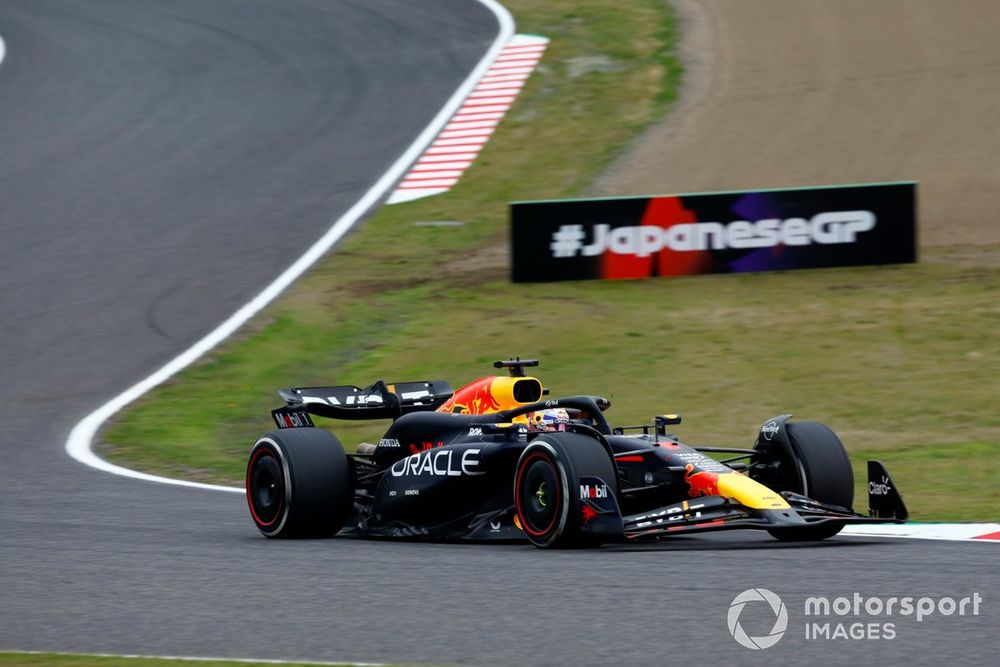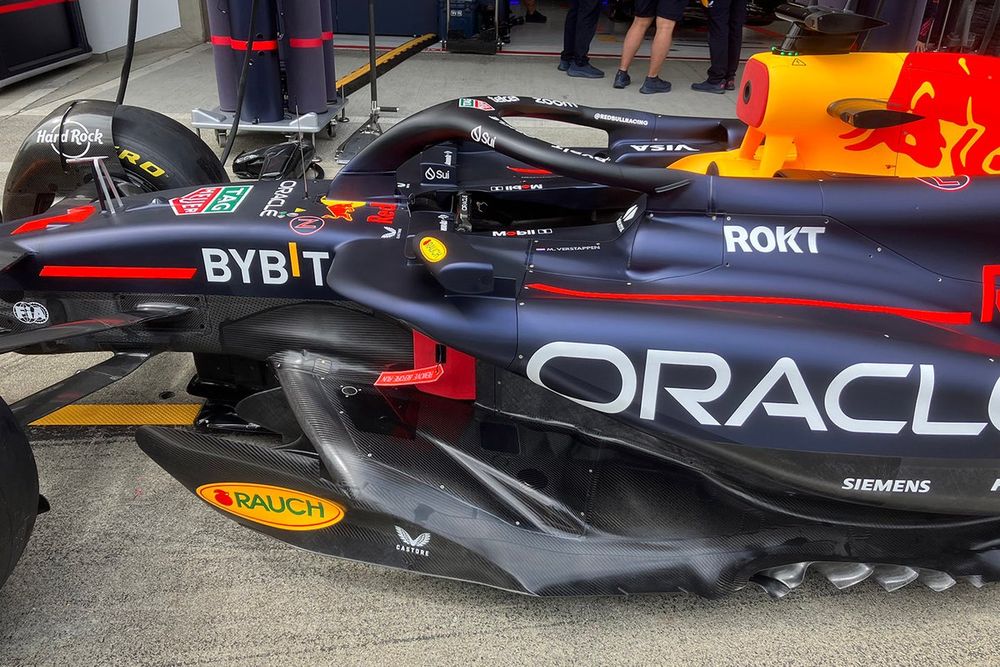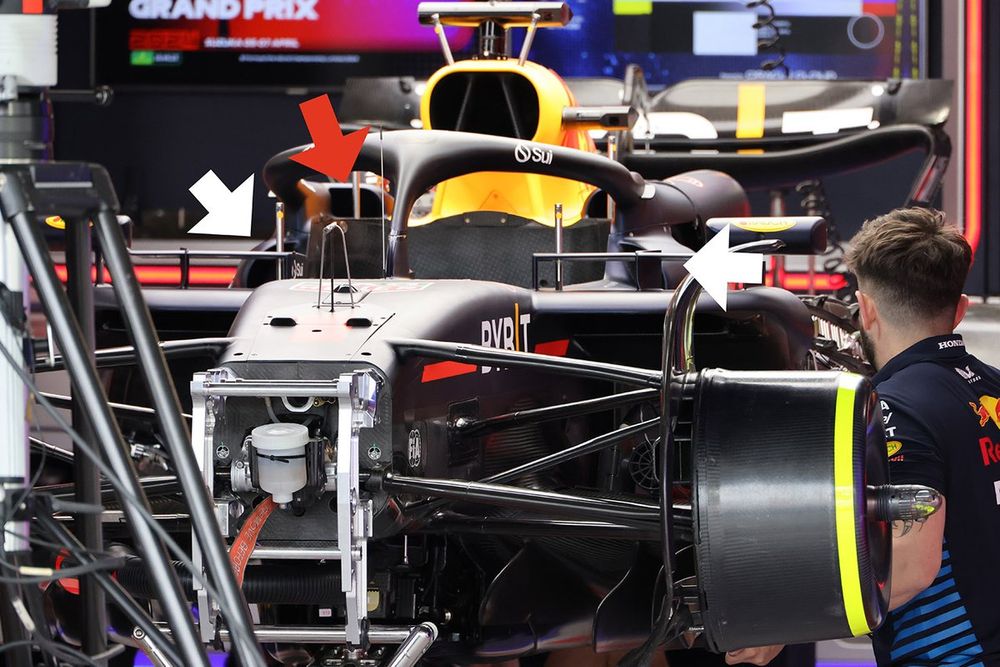While the revisions did not include any changes to its aggressive sidepod solution, which is a step above what any of its rivals have done so far, there was a notable tweak to the arrangements surrounding the cockpit.
Red Bull has already raised eyebrows this year by having inlets in the channel behind the cockpit – with the squad having copied the high gulleys that Mercedes had utilised in recent years.
But for the Japanese GP, an extra inlet has appeared much further forward – as is shown with the white arrows in the image below.
In the upgrade submission documents that teams must send to the FIA before each race weekend, Red Bull explained that this revised location was technically for the “sidepod mounted primary heat exchangers”.
This extra inlet has also coincided with the squad completely closing off, as it has done with extra panels at some races already, outlet areas to help improve efficiency and deliver aero gains further downstream.
Speaking about the motivation for the change, Red Bull chief engineer Paul Monaghan explained that a great deal of work had gone into defining the location for the inlet – as it was key to find one that delivered the biggest bang for buck.
“When you’re trying to do an inlet, it will be really silly to put the inlet where there’s little pressure to work with,” he said.
“So, we’re trying to refine and pick the highest pressure inlets to make the radiator cooling most efficient. That’s the rationale behind the repackage of the inlets. It offers us some rewards.”

Max Verstappen, Red Bull Racing RB20
Photo by: Sam Bloxham / Motorsport Images
While teams are constantly battling aero compromises with additional cooling, Monaghan was clear that the extra inlet was not a response to any issues the team may have found in the early races.
Instead, he explained that the changes were part of an upgrade push that had been agreed before the RB20 had run in anger.
“It was actually done before we even turned a wheel in pre-season testing,” he said. “So, this was sitting there as a small performance gain. The question was, could we actually get it onto the car in the flyaway sequence?
“We looked at it and thought: ‘yeah, we can.’ We made some parts and got them to Australia, so some of it started there. And then we picked the rest of it up here.”

Red Bull Racing RB20 technical detail
Photo by: Jon Noble
New floor and revised brakes
As well as the…
Click Here to Read the Full Original Article at Autosport.com – Formula 1 – Stories…

